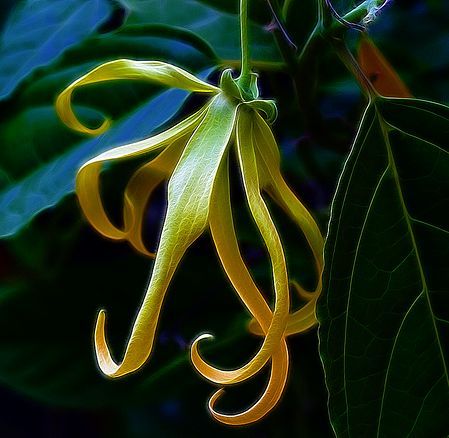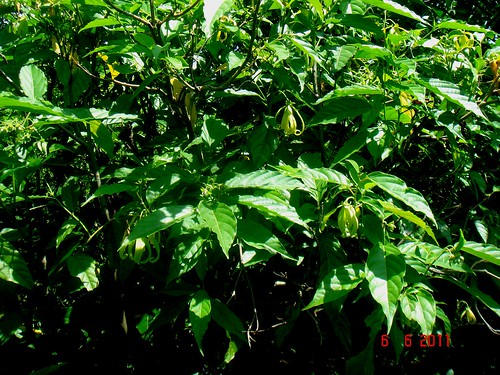
Ylang Ylang Perfume Tree – Root & Branch Review
Unassuming in appearance the evergreen Ylang Ylang tree is highly valued for the essential oil it can produce.
Key Features of the Ylang Ylang
- Latin name – Cananga odorata , other common names Kenanga kebun, Macassar-oil plant, Perfume tree
- Height – up to 80 feet
- Type of tree – evergreen
- Leaves – Oval green leaves sometimes with wavy edges
- Flowers – clusters of fragrant green flowers turning yellow with six long twisted, hanging petals
- Fruit – clusters of small, oval, black berries
- Bark – Pale grey
- Family – Annonaceae the Custard Apples
Origins and Distribution of the Ylang Ylang
- Native of Indonesia and the Philippines.
- Now grown widely throughout tropical Asia, India and the Pacific Islands.
Uses and Attributes of the Ylang Ylang
- Scented oil is made from distilled flowers. 2000 pounds of flowers make 40 pounds of oil if you are lucky.
- The oil is used in the perfume industry allegedly in Channel No5.
- The oil is used to treat high blood pressure but may also cause it because it is a reputed aphrodisiac.
- Ylang Ylang berries and seeds are an important food for pigeons.
Gardeners Tips for the Ylang Ylang
- Not suitable for UK growing.
- In a hot house environment the plants can be grown from seed and would flower in 3-4 years.
Other types of Ylang Ylang
- Cananga odorata var. fruticosa is called the dwarf ylang-ylang. It grows as small tree or compact shrub.
- Artabotrys odoratissimus, ylang-ylang vine, and Artabotrys hexapetalus, climbing ylang-ylang, are woody, evergreen climbing plants in the same family.
Ylang Ylang comments from elsewhere
- Ylang ylang, has a heavy and sweet scent similar to jasmine, is associated with weddings and honeymoons.
- ‘In addition to its wonderful fragrance, the plant blooms practically year round. Its branches are entirely covered with clusters of flowers and dark green oval fruits. Ripe fruits have a black color. Unlike some Annonaceae, Ylang-Ylang fruits are not used in foods; however they are quite edible and have the tart but pleasant aroma of a conifer or juniper…….The flowers of the Ylang Ylang are pollinated by night moths; therefore the most intensive smell is released from dusk until dawn. The flowers to be used by the distillation process are picked at sunrise when their aroma is the most intense. more from Top Tropicals
Credits
“Cananga odorata (Lam.) Hook.f. & Thomson by adaduitokla, CC BY-NC-SA 2.0 ‘Cananga odorata (Lam.) Hook.f. & Thomson, Annonaceae. CN: [Malay – Kenanga], Ylang-ylang, Cananga tree, Ilang-ilang, fragrant cananga, Macassar-oil plant, Perfume tree, is a tree valued for its perfume. The essential oil derived from the flowers is used in aromatherapy and floral theme perfume.’
